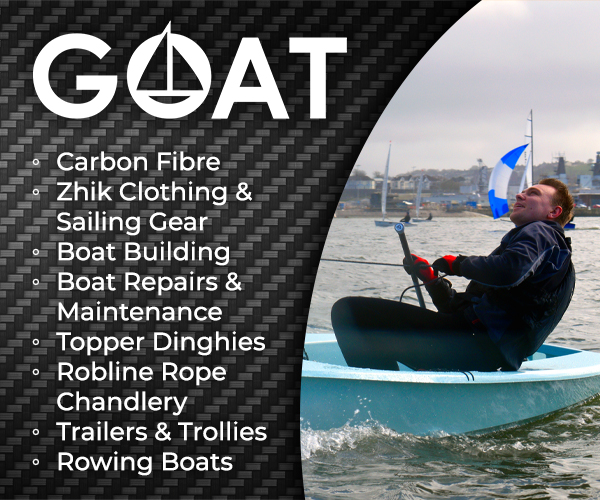
An interview with Thor Borresen about the “World’s Highest Regatta”
by David Schmidt 1 Aug 2018 16:00 BST
August 3-5, 2018

J/24s negotiate Colorado's shifty mountain breezes at the Dillon Open Regatta © Dillon Open Regatta


When one’s mind turns to John Denver’s classic early 1970s folk anthem, “Rocky Mountain High”, one’s mind tends to travel to the continental divide’s pine-scented forests, craggy, sky-scratching peaks, wide-open vistas, and maybe a group of friends enjoying an evening’s campfire. Sure, other people might imagine skiing bottomless powder or climbing wind-scoured 14ers, but-broadly speaking-few people imagine sailing. Fair enough, as Colorado is darn close to a thousand miles from the nearest bit of saltwater and has built its reputation on terrestrial-based, adrenaline-soaked activities, however this doesn’t stop the members of the Dillon Lake Yacht Club, situated in Dillon, Colorado (some 70 miles west of Denver), from hosting the annual Dillon Open Regatta (August 3-5, 2018) on the waters of Lake Dillon (elevation: 9,017 feet above the coastal brine), which they gamely bill as the “world’s highest regatta”.
As a former resident of Carbondale, Colorado (situated at 6,181 above sea level, between Glenwood Springs and Aspen), I would often drive past Dillon Lake on I-70, en route to Denver International Airport and a sailing trip back East, and watch the massive puffs pouring down from the surrounding peaks, admiring the sailors dedicated enough to brave low oxygen levels and auto-tack shifts to get a sailing fix, sans having to punch a massive hole in the sky, Boeing style, to make it happen.
While I sadly never got to sail on Colorado’s beautiful lakes (not yet at least!), I’ve always had a keen interest in the Dillon Open Regatta, both for its geographic anomaly and for the fact that there are some darned good sailors, albeit with severe climbing and skiing habits (myself formerly and proudly included), who live in the Centennial State and refuse to abandon their love of sailing.
According to the regatta’s NOR, the event is open to all “keelboats, junior sailors and centerboard boats” and will feature One Design and handicap classes. Racing doesn’t begin until 1300 hours each day, giving participants time for a vigorous morning hike or climb (welcome to Colorado!) or to socialize with their sailing friends at the daily breakfasts, and spectator spots can be arranged (for a modest fee), which allows non-sailing/racing family and friends to come and watch the high-altitude tactics unfurl.
As for seeing it "rainin’ fire in the sky”, Rocky Mountain High-style, you’re on your own (hint: it’s Colorado), however, odds are spot-on that all participating Dillon Open Regatta sailors will have plenty of time to enjoy “the serenity of a clear blue mountain lake”.
I interviewed Thor Borresen, vice commodore president of the Dillon Yacht Club, in Dillon, Colorado, via email, to learn more about the 2018 Dillon Open Regatta.
How many boats are you expecting on the starting line, and how would you describe competition levels at the Dillon Open Regatta?
This year we are hoping to see 90 boats out on the water. We have a mix of skill levels and about ten percent of the boats have experienced crews who travel and compete around the country.
Are most boats local or does this regatta create regional gravity? If you do attract out-of-state sailors, have you ever heard of competitors suffering from altitude-related illnesses at the regatta?
Most of the boats are local, including the Denver, Boulder, and [the greater] Mountain area. We used to attract a fair number of boats from out of town, however, that number is down and seem to be in line with the shrinking sailing communities around the country.
We are excited to host a crew from the Bahamas this year..making us “an international event”.
When sailors do come in from sea level, we make sure to explain the importance of staying hydrated and getting proper rest. The altitude can really get to you. Last year’s regatta left an accomplished pro sailor from California with a severe bout of altitude sickness after he under-estimating the potential effects of the 9,017-foot altitude.
Are there any limits to the size of boats that can enter? What about the number of hulls?
No, we do not have a size restriction or number of hull restriction. This year, the largest boat in the regatta will be our local Cita and she is 40-feet long.
How would you describe the breeze on Lake Dillon, compared to other lakes? Also, how much of an influence do the surrounding mountains have on your airflow across the water?
The breeze on Lake Dillon will keep you on your toes and provides some of the most challenging sailing conditions on the planet right here in the Rocky Mountains.
We generally have two or three wind patterns colliding due to the Continental Divide and things can change incredibly fast. Storms can come seemingly out of nowhere, 90-degree shifts are not uncommon, and you can see velocity changes from 5 to 25 knots in a heartbeat.
If you can sail here, you can sail anywhere!
Colorado is famous for its afternoon thunderstorms during the month of August….do these ever become problematic for the event?
The day before the 2017 Dillon Open was the third and final day of the Santana 20 Nationals. We had 35+ knot breeze come in quickly on a downwind leaving two boats [with broken] masts and one boat swamped and was on its way to the old original town of Dillon (at the bottom of the lake) before being rescued by our Marina team.
We were all hoping we wouldn’t see a repeat of that mess during our 2018 Dillon Open. We lucked out!
What kind of onshore/evening entertainment do you and the other organizers have planned?
We have a Burger & Beer party planned for Friday night to welcome the competitors! Then we’ve got special plans this year for our Saturday night event.
Since this is the Dillon Yacht Club’s 50th anniversary, we are having a “Birthday Party” to celebrate! Dinner will be served up, cake gorged upon and then we’ll dance the night away to a DJ Mix!
Can you tell us about any recent steps that the regatta has taken to reduce its environmental footprint or otherwise “green-up”?
This year all the Race Committee volunteers are asked to bring water bottles and we’ll have large jugs of water onboard. The Spectator boats will do the same.
All the regatta plates, cups, and disposable silverware will be compostable for the first time.
Anything else that you’d like to add, for the record?
We encourage the local community to come out and join us on the spectator boat rides. It allows the non-racer to be on the water right in the mix of things to watch the starts and the action at the mark roundings.
It’s a great way to experience the lake, mountains and racing up close and personal. I think this is the most beautiful sailing venue in the world.